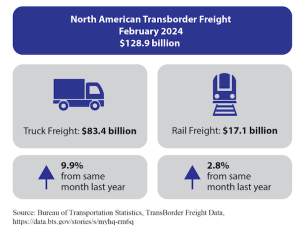Rising demand for consumer and industrial goods means truckers, who haul 70 percent of U.S. freight, are in for a busy 2011. That will keep things tight in an industry hit hard by the recession.
Some 250,000 trucks, or 13 percent of the total, went off the road since the start of 2008, according to investment banking firm Avondale Partners.
Higher demand and lower capacity will likely mean big truckers, including YRC Worldwide, Ryder System, Con-Way and J.B. Hunt Transport Services, will seek to raise their rates.
But customers are sure to protest anything that will boost costs as a time when they remain worried about stubbornly high unemployment.
"There's no place for rates to go but up," said Rosalyn Wilson, senior business analyst for engineering consultant Delcan Corp in Sterling, Virginia. "Truckers are going to finally have the ability to start raising rates, and if it costs more to transport we're going to see a trickle-down effect that's going straight to consumer goods."
Consumer prices could rise 2 percent to 4 percent as a result of trucker price hikes, said Noel Perry, principal of research firm Transport Fundamentals in Cornwall, Pennsylvania.
That might not draw fire in a healthier economy, but will likely provoke protest at a time when major customers including the nation's retail chains remain wary about consumer demand and worried about their profits.
"I would be extremely skeptical that there's going to be much in the way of ability to pass through higher costs," said Keith Hembre, chief economist at First American Funds in Minneapolis. "The other avenue for absorption of those higher costs would be in corporate profit margins."
Truckers wouldn't be alone in trying to raise their prices. Express shippers United Parcel Service Inc and FedEx Corp have already told customers they plan to boost their ground rates by about 4.9 percent in 2011.
Tight Driver Supply
The industry's supply of drivers could tighten as new U.S. Department of Transportation regulations aimed at improving safety on the nation's highways take effect. See: http://ai.fmcsa.dot.gov/sms/
The new rules will make it easier for trucking company operators to tell if potential drivers have a history of speeding, reckless driving, substance abuse, crash histories or have failed to maintain their vehicles. That could weed out some 300,000 drivers, or about 10 percent of the industry's work force, industry analysts said.
"If the economy gets out of first gear and into second gear, we could see the tightest environment we've ever seen in trucking," said Bob Costello, chief economist at the American Trucking Association.
As the current generation of drivers reaches retirement, the industry has found fewer young people willing to take jobs that leave them away from their homes and families for extended periods, analysts said.
"It's becoming harder to bring in new drivers," said BMO Capital Markets analyst Jason Granger in Toronto.
Trucking company executives said plans to lower the numbers of hours a driver is permitting to go without rest to 10 from the current 11-hour rule could further pinch capacity.
"It's going to require 3 to 5 percent more trucks on the road every day to deliver the same amount of freight," said Herb Schmidt, president of Con-Way Truckload, of Joplin, Missouri.
Railroads, including Union Pacific , Norfolk Southern and Kansas City Southern could pick up some of the slack if truckers can't meet growing demand. But railroads tend to specialize in hauling bulk commodities rather than consumer goods, which are distributed more widely and in smaller quantities than corn or coal.
"We are preparing, and we need to prepare, for much higher demand for freight rail transportation," Don Seale, chief marketing officer at Norfolk Southern, said at an investor con







